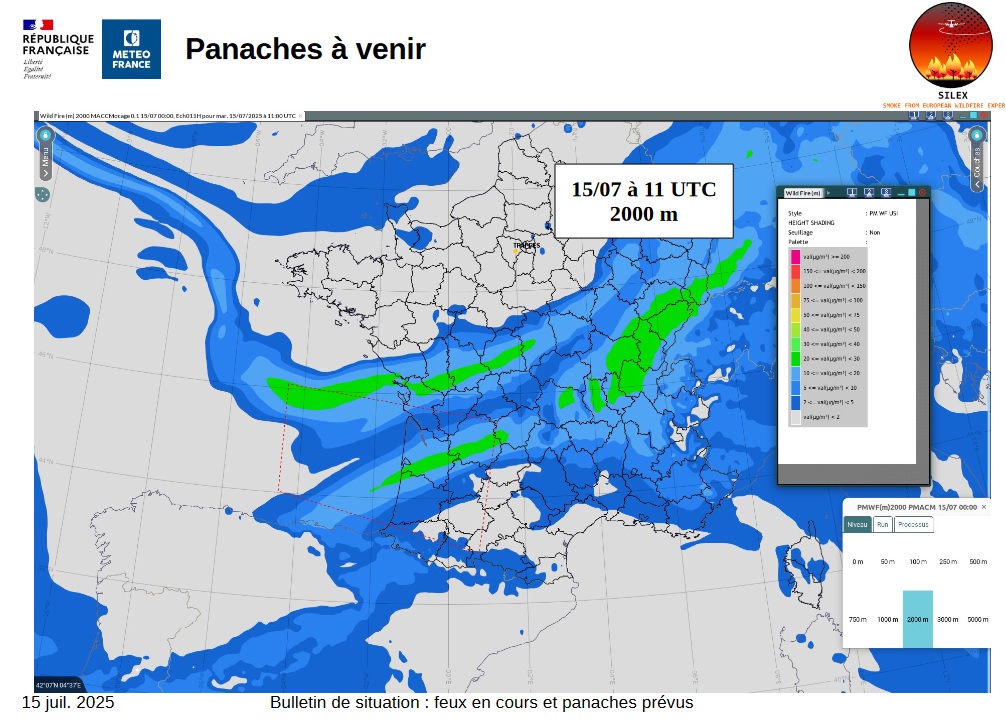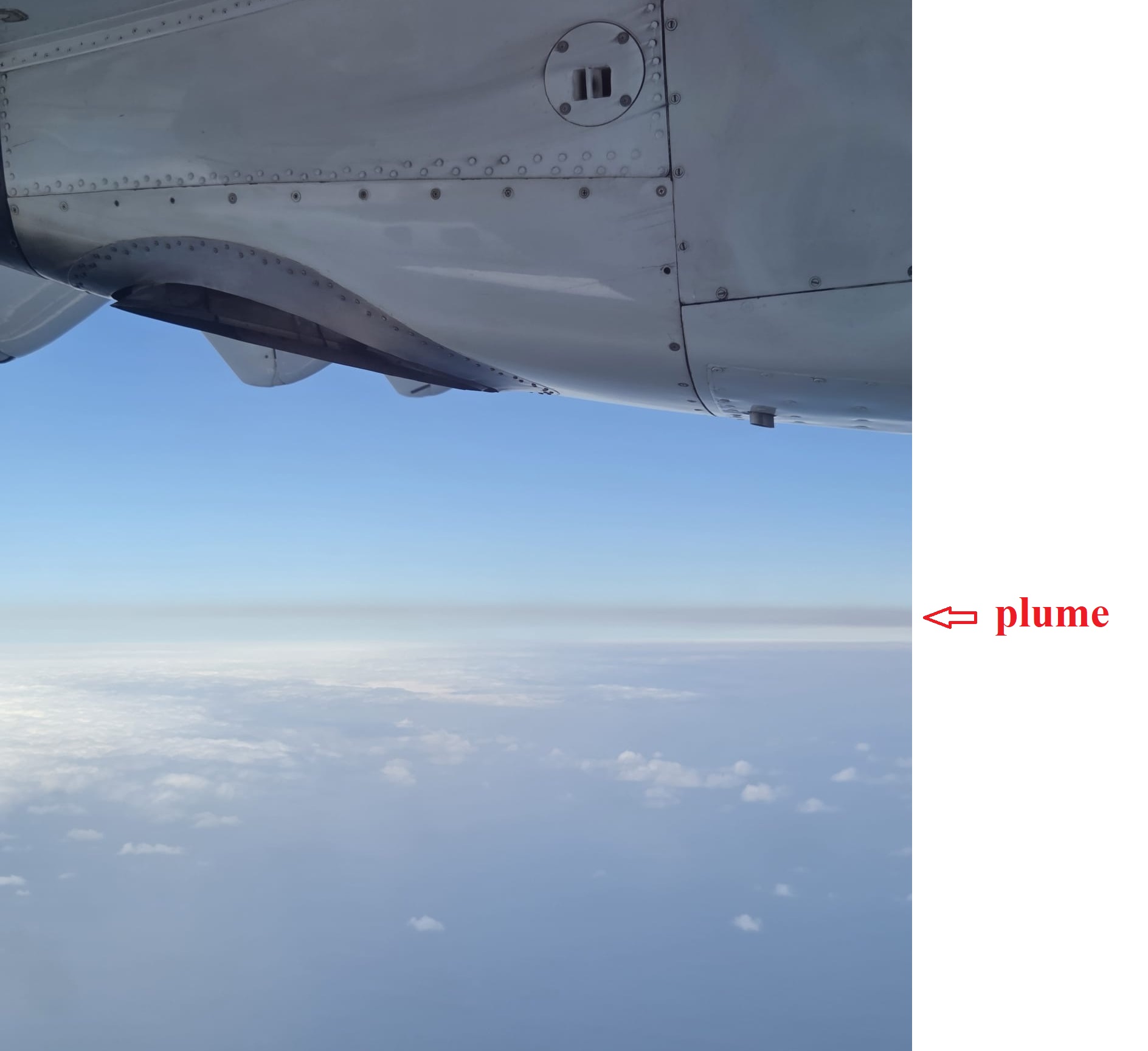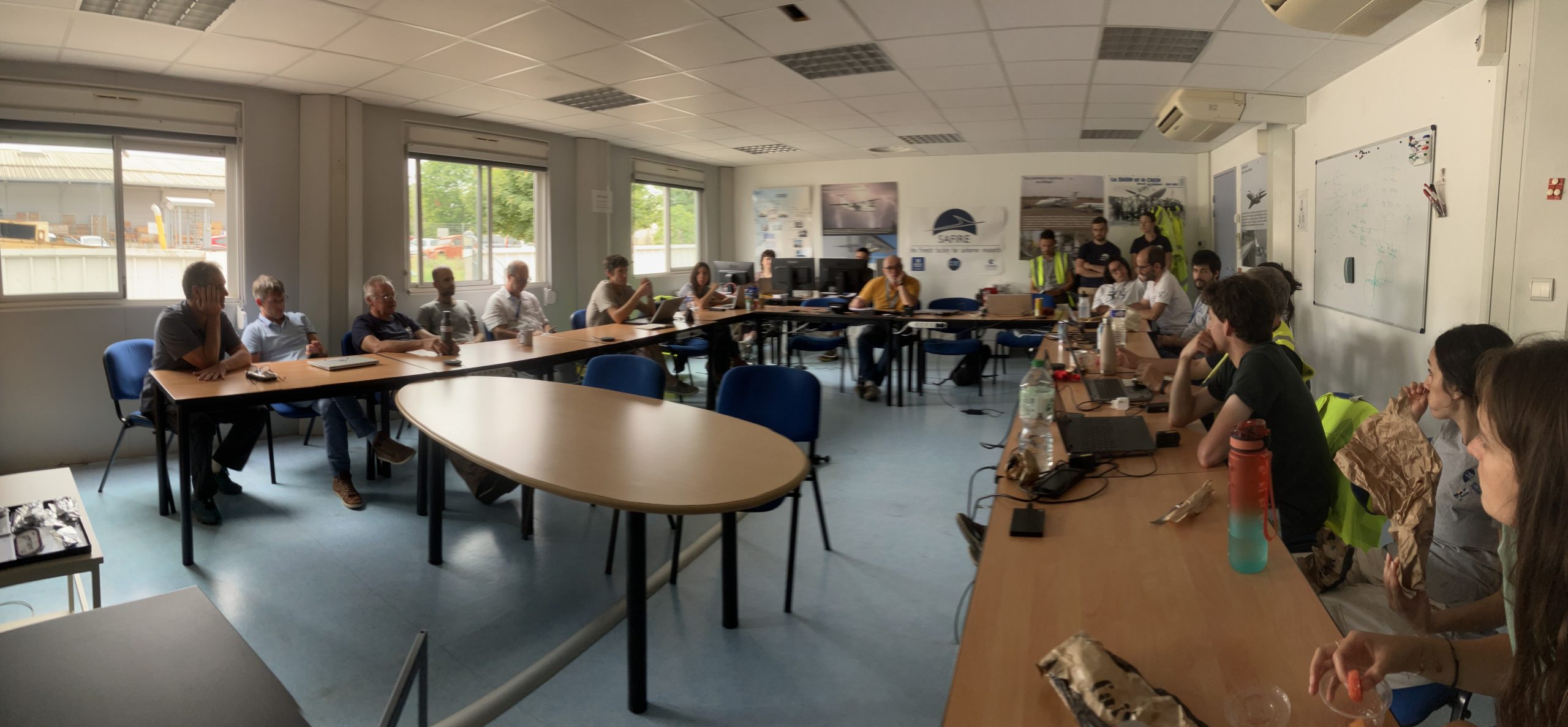In the absence of any local fire, today’s flight aimed to observe plumes resulting from a Canadian wildfire.

The Chemistry-Transport model MOCAGE accurately predicted a high concentration of fine particles late in the morning reaching France via both the Bay of Biscay and the Gulf of Lion.

These observations were confirmed by backscatter signals recorded by the CNRM water vapor lidar located in Bordeaux.
A 3-hour and 20-minute flight was conducted (from 11:30 a.m. to 2:50 p.m.), during which profiles and transects were made through two separate plume layers at different altitudes. The return flight to Francazal passed through the more diluted upper plume layer.


Debriefing (team SAFIRE and scientists from CNRM, LOA, Lamp and UPC)
